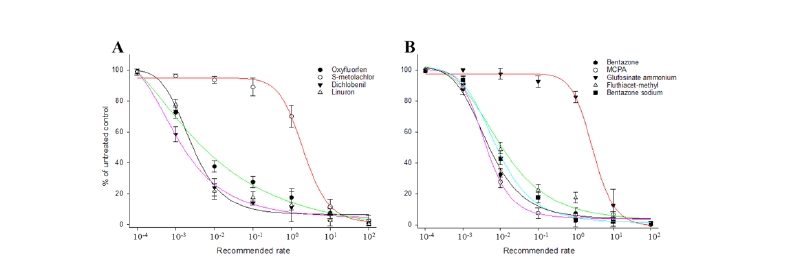Abstract
One of the main concern of transgenic crops is unintentional release of unwanted gene or genes through pollen-mediated gene flow. Since 2009, transgenic canola (Brassica napus) contained herbicide resistant gene is being unintentionally released into the Korean ecosystem. This study was conducted to identify alternative herbicides to eliminate transgenic canola under greenhouse and field conditions in 2018 and 2019, Daejeon South Korea. Four pre- and five post-emergence herbicides were used at 1x and 2x recommended rates as a chemical treatment. The growth parameters of the trial plant and control efficacy of the herbicides determined separately according to the application method (pre and post) and experimental condition (greenhouse and field). Except glufosinate-ammonium, all the post-emergent herbicides including bentazone, fluthiacet-methyl, MCPA and bentazone sodium had almost 100% canola control efficacy at both 1x and 2x recommended rates. Regarding the pre-emergence herbicides, dichlobenil and oxyfluorfen showed a full control efficacy at both 1x and 2x recommended rates. It is worth noted that when linuron was applied, although some of the seeds were germinated, a gradual death was observed. While, s-metolachlor was not suggested to manage the canola as a chemical control because of its very low efficacy on this plant.
Figures & Tables

Fig. 1.Dose-response curves of pre-emergence (A) and post-emergence (B) herbicides on Brassica napus, % of untreated control (28 and 14 DAT respectively). 1x (100) recommended rate (g a.i. ha): oxyfluorfen-1175; s-metolachlor-750; dichlobenil-6700; linuron-500; bentazone-1600; MCPA-1680; glufosinate ammonium-900; fluthiacet-methyl-610; bentazone-sodium-1000.


